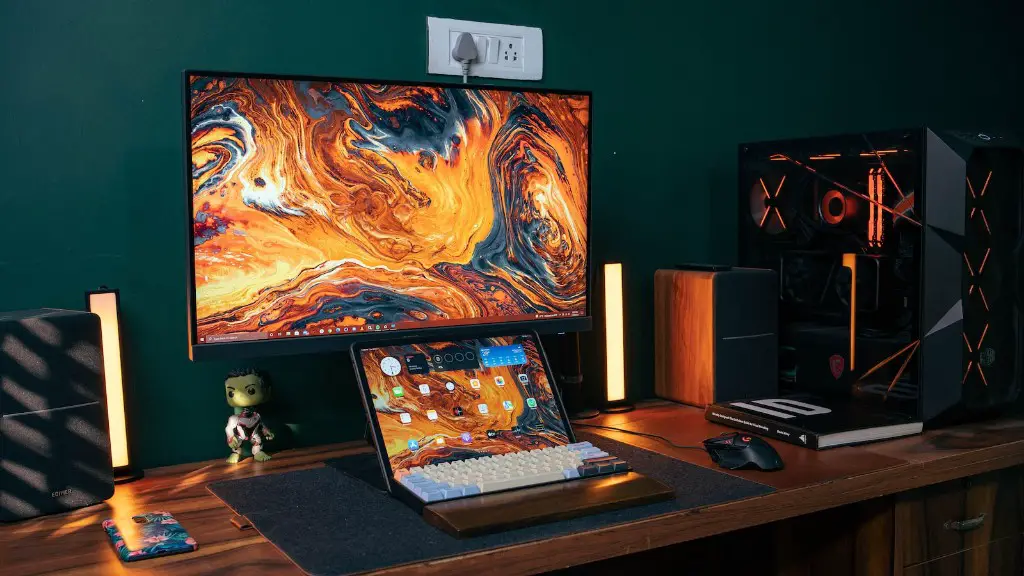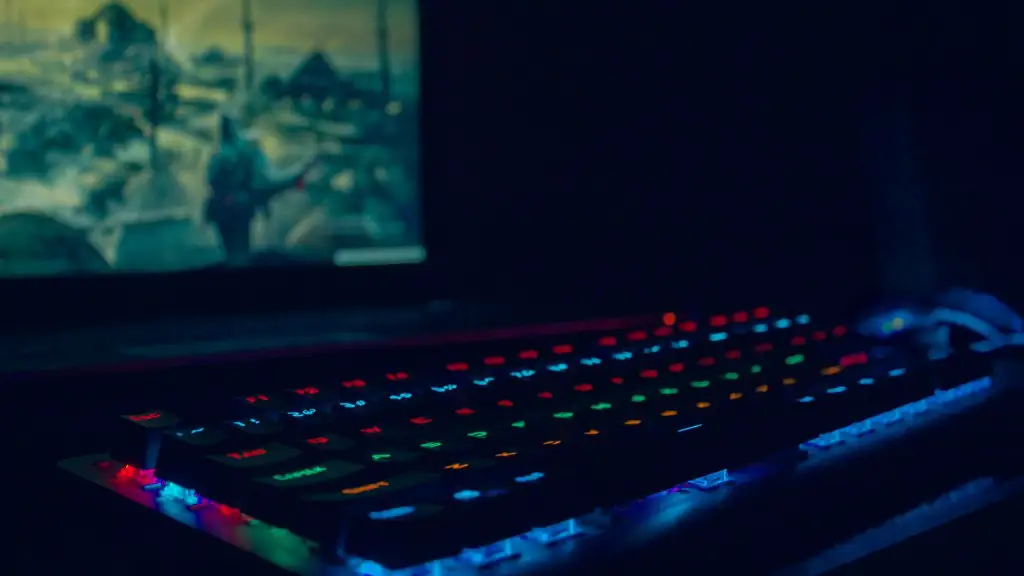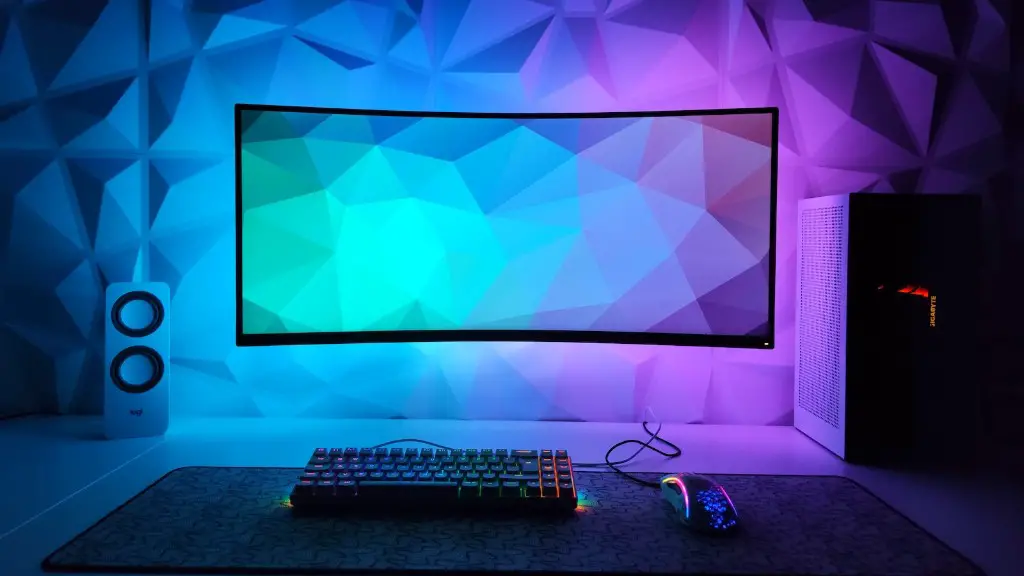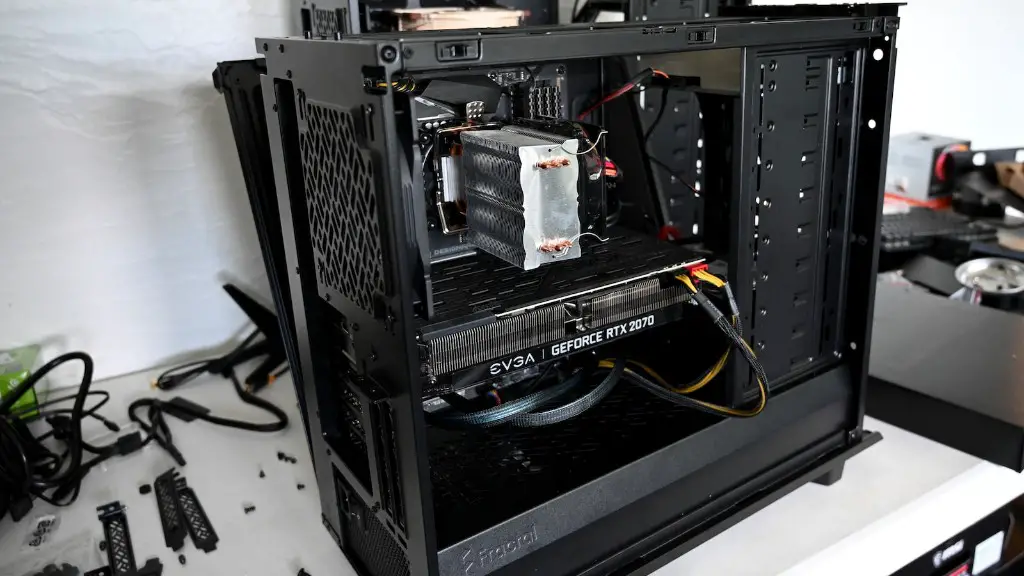It’s no secret that choosing the right gaming monitor is key if you want to get maximum performance from your gaming computer. But what makes a great gaming monitor? What specs should you be looking for? Here, we look at what good gaming monitor specs are that are available.
When it comes to gaming monitors, it helps to start by looking at the three primary specs: the display type, resolution, and refresh rate. LCD (Liquid Crystal Display) monitors are the most popular, and they come in either TN (Twisted Nematic) or IPS (In-Plane Switching) panels. TN panels often provide better response times, while IPS panels usually come with better color accuracy and viewing angles. As for resolution, the higher the better – most high-end gaming monitors today are at least FullHD or 1920 x 1080 or higher.
The refresh rate is of particular importance for gaming monitors, as it’s measured in hertz (Hz). The higher the number, the smoother your gameplay, as it effectively tells you how many times the image on the display refreshes per second. Anything below 60-75Hz is not considered ideal for demanding gaming sessions, so look for monitors with a refresh rate of at least 90-120Hz for performance gaming.
There are other secondary specs to consider too. These include the response time, which tells you how quickly a monitor can transition from one color to the next; the contrast ratio, which tells you the difference in light intensity between the brightest and the darkest parts of an image; and the viewing angle, which is how wide you can view the display from before color distortion sets in.
Finally, when it comes to gaming monitors, one of the most important specs is the input lag. This is the amount of time it takes for your display to process the signal sent by your PC. Low input lag is critical as any delay can be the difference between victory and defeat.
Display Technologies
The display type of a gaming monitor is just as important as the resolution, refresh rate, and other specs. The two main types of monitors currently on the market are Liquid Crystal Display (LCD) monitors and Light Emitting Diode (LED) monitors. LCD monitors use liquid crystals and a backlight to display images. LED monitors use LEDs instead of a traditional backlight and offer better color accuracy, brightness, and contrast ratio.
The two main types of LCD displays are twisted nematic (TN) and in-plane switching (IPS). TN displays offer faster refresh rates, while IPS displays offer better color accuracy and viewing angles. The latest trend in display technology is OLED, which stands for organic light-emitting diode. These displays provide the deepest black levels and best color accuracy of any display technology currently available.
It’s important to note that not all LCDs are equal, and the same goes for LED and OLED displays. That’s why it’s important to research what type of display the manufacturer is using, as the specifications can vary greatly from one monitor to the next.
In addition to the type of display, it’s also important to consider features such as adaptive-sync technology. This is used to synchronize the monitor’s refresh rate with the GPU, which helps reduce screen tearing and other artifacts. This is especially important for gaming monitors as it provides a smoother, more immersive gaming experience.
Stand Adjustments
Another important factor to consider when purchasing a gaming monitor is the stand. Many monitors come with adjustable stands that allow you to change the viewing angle, height, depth, tilt, and swivel. This is important as it allows you to customize the viewing experience to suit your preferences and the size of your desk.
In addition to adjustability, you also want to make sure the stand is sturdy. A good monitor stand should support the weight of the monitor and also be stable enough to stay in place when making adjustments. Some monitors also come with integrated stands that can extend, tilt, and rotate, allowing for even more adjustability.
Finally, look for stand features such as quick-change ports, integrated cable channels, and built-in speakers. Quick-change ports make it easy to switch between HDMI, DVI, and DisplayPort with ease, while cable channels help organize and reduce desktop clutter. Integrated speakers are a nice bonus, although dedicated speakers are usually a better solution for gaming.
Connectivity Options
When shopping for a gaming monitor, you should also consider the connectivity options. Make sure the monitor has enough ports to support your needs. HDMI and DisplayPort cables are the most common, while some high-end displays also include USB-C ports. For multi-monitor gaming setups, you should look for monitors with several ports.
It’s also important to make sure your monitor is compatible with your system. The ports on your display need to match the ports on your computer, so make sure to check the specifications before purchasing. In addition, if you plan on using a G-Sync or FreeSync monitor, you’ll need to make sure your graphics card is also compatible.
Finally, look for features such as Picture-in-Picture (PIP) and Picture-by-Picture (PBP). These allow you to display multiple inputs on the same monitor, so you can game and watch movies or videos at the same time.
Extras
When choosing a gaming monitor, be sure to look for extras such as built-in speakers, headphones jacks, and any additional features that could improve your gaming experience. Many gaming monitors include built-in RGB lighting, as well as other gaming-specific features such as multi-monitor viewing, on-screen displays, and even gaming integration software.
When it comes to gaming headsets, you’ll want to look for ones with a good mic. Many gaming monitors come with a standard 3.5 millimeter jack, while some come with a USB connection for better sound quality. Look for features such as noise cancellation and microphone monitoring if you want to take your gaming experience to the next level.
Finally, it’s worth mentioning that gaming monitors are available in a range of sizes, from compact 24-inch models to giant 65-inch ones. Decide on the size based on your gaming needs, budget, and available space.
Aesthetics
In addition to all the features and specs mentioned above, you should also consider the aesthetics of your gaming monitor. The monitor should fit the overall look and feel of your gaming setup, and its design should also complement your environment. Look for monitors with a sleek design, thin bezels, and adjustable lighting to make it look even more impressive.
Of course, there’s no one-size-fits-all approach to choosing a gaming monitor. Think about your gaming needs, budget, and available space to narrow down your choices. Once you’ve narrowed it down, read plenty of reviews and compare the features and specs before you make a final decision. Good luck!



